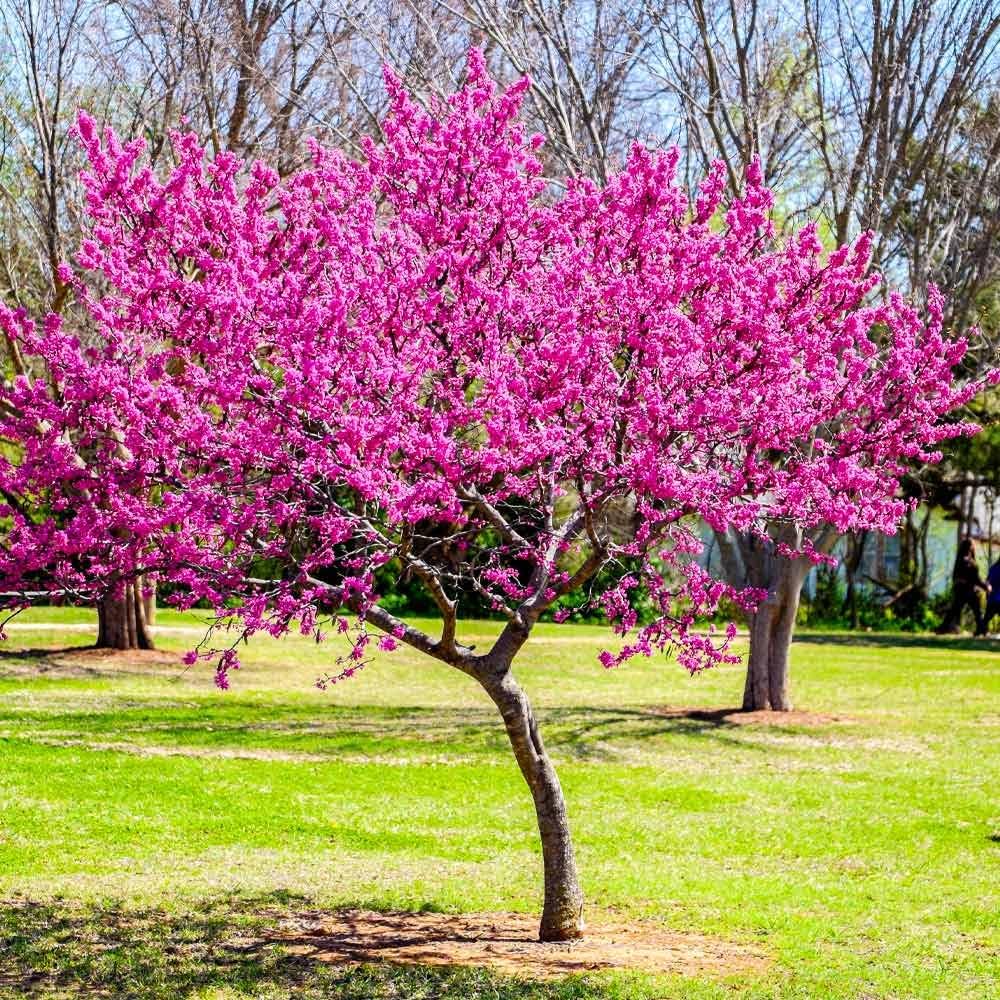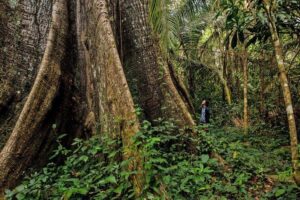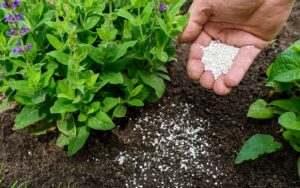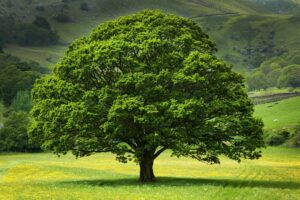Redbud Tree Varieties: A Complete Guide to Growing and Selecting the Perfect Specimen
Are you looking to add a splash of early spring color to your landscape? Redbud trees (Cercis spp.) might be exactly what you need. These stunning ornamental trees are known for their spectacular displays of pink to purple flowers that emerge directly from the branches before the leaves appear, creating a magical effect in the garden.
In this comprehensive guide, you’ll discover the diverse world of redbud varieties, learn how to choose the right one for your garden, and master the techniques needed to grow and care for these beautiful trees successfully.
Understanding Redbud Trees
Native to North America, Europe, and Asia, redbud trees belong to the legume family (Fabaceae). These small to medium-sized deciduous trees or large shrubs are prized for their heart-shaped leaves and their remarkable spring blooms that appear along branches and sometimes even on the main trunk—a phenomenon known as cauliflory.
According to the USDA Forest Service, redbuds are not only ornamentally valuable but also play important ecological roles by providing early-season nectar for pollinators and food for wildlife.
Key Characteristics of Redbud Trees
Before diving into specific varieties, let’s understand what makes redbuds special:
- Size: Typically 15-30 feet tall with a similar spread
- Bloom Time: Early spring, usually before leaf emergence
- Flower Color: Pink to purple (with white varieties available)
- Foliage: Heart-shaped leaves, some varieties offer unique colors
- Fall Color: Yellow to golden in most varieties
- Growth Rate: Moderate, about 1-2 feet per year
- Lifespan: 50-75 years with proper care
10 Outstanding Redbud Tree Varieties
1. Eastern Redbud (Cercis canadensis)
The Eastern Redbud is the most common and widely planted native variety in the United States. Native to eastern and central North America, this variety features vibrant magenta-pink flowers and heart-shaped leaves that emerge with a reddish tint before maturing to green.
Growth Habit: Typically reaches 20-30 feet tall with a similar spread USDA Hardiness Zones: 4-9 Special Features: Exceptional adaptability to various soil conditions
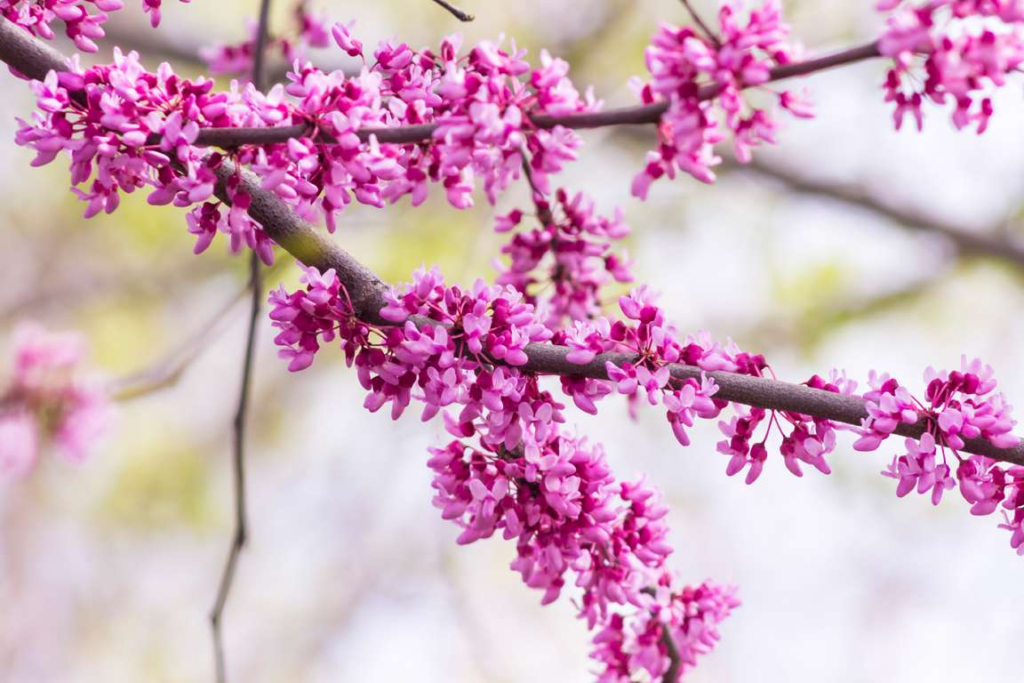
2. ‘Forest Pansy’ Redbud (Cercis canadensis ‘Forest Pansy’)
One of the most popular cultivated varieties, ‘Forest Pansy’ is prized for its stunning purple foliage that emerges after its deep pink flowers. As summer progresses, the leaves fade to a more subdued burgundy-green.
Growth Habit: Compact form, 20-25 feet tall and wide USDA Hardiness Zones: 5-9 Special Features: Spectacular purple leaves provide multi-season interest
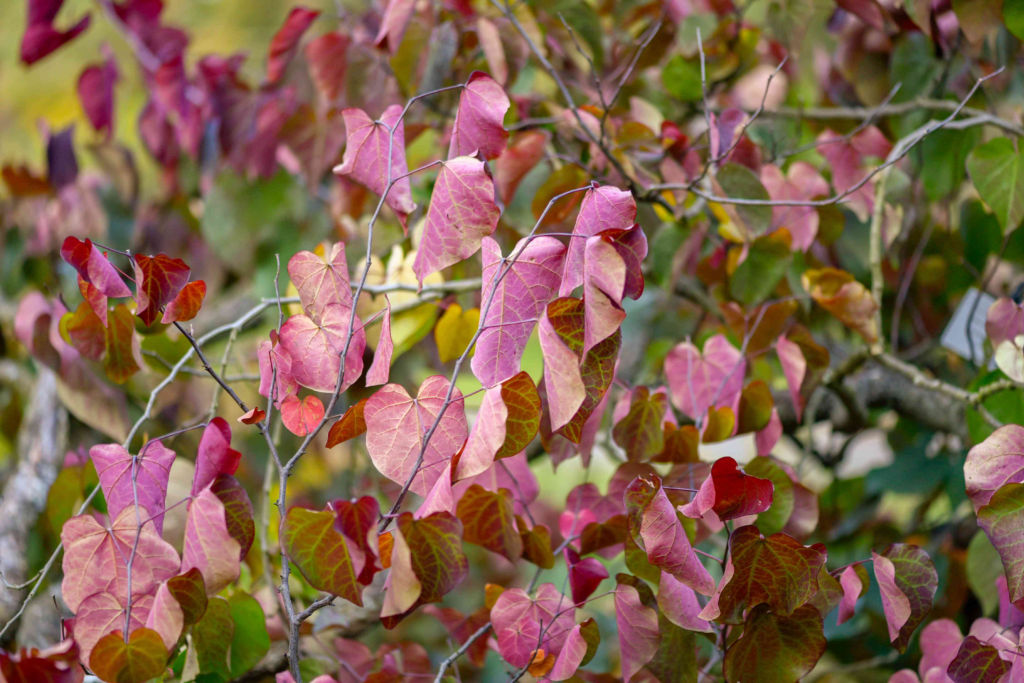
3. ‘Ruby Falls’ Weeping Redbud (Cercis canadensis ‘Ruby Falls’)
This spectacular weeping variety combines the purple foliage of ‘Forest Pansy’ with a graceful, cascading growth habit. Its compact size makes it perfect for smaller gardens or as a focal point in landscape designs.
Growth Habit: 5-6 feet tall and 4-5 feet wide at maturity USDA Hardiness Zones: 5-9 Special Features: Dramatic weeping form with purple foliage
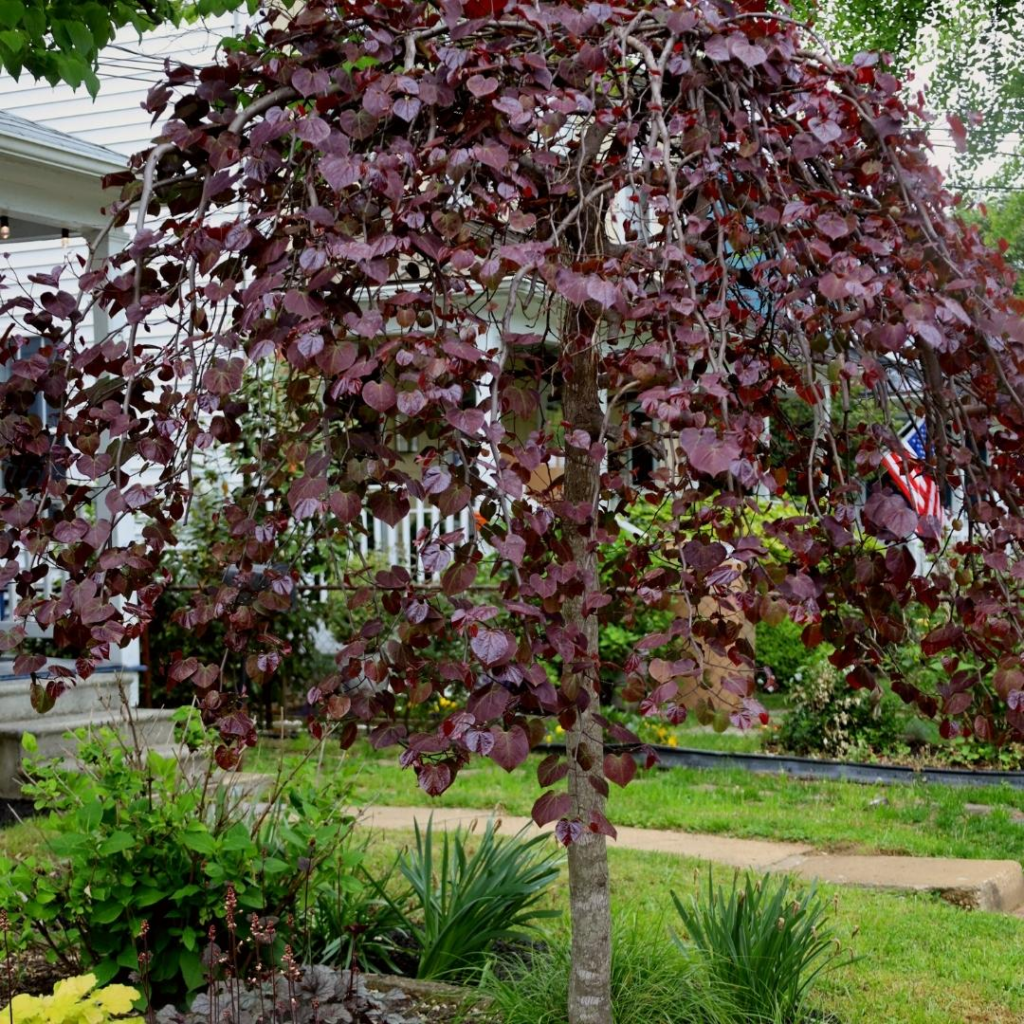
4. Texas Redbud (Cercis canadensis var. texensis)
Adapted to the challenging climate of Texas and neighboring states, this variety features glossier, thicker leaves that help it withstand heat and drought better than other redbuds. The flowers are similar to the Eastern Redbud but often with a deeper magenta hue.
Growth Habit: Smaller than Eastern Redbud, typically 15-20 feet tall USDA Hardiness Zones: 6-9 Special Features: Exceptional heat and drought tolerance
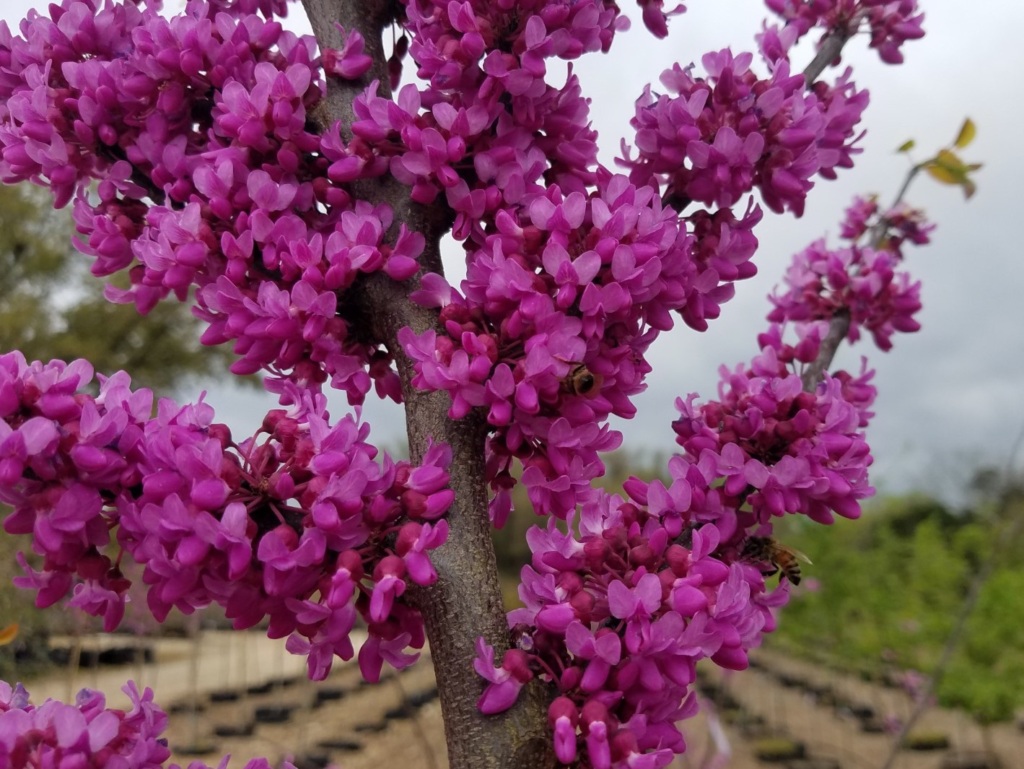
5. ‘Oklahoma’ Redbud (Cercis canadensis ‘Oklahoma’)
A selection of the Texas Redbud, ‘Oklahoma’ offers intensely colored wine-red flowers and glossy, thick leaves with wavy margins. This variety is particularly valued for its vibrant flower color and excellent heat resistance.
Growth Habit: 15-20 feet tall and wide USDA Hardiness Zones: 6-9 Special Features: Deepest flower color of all redbud varieties
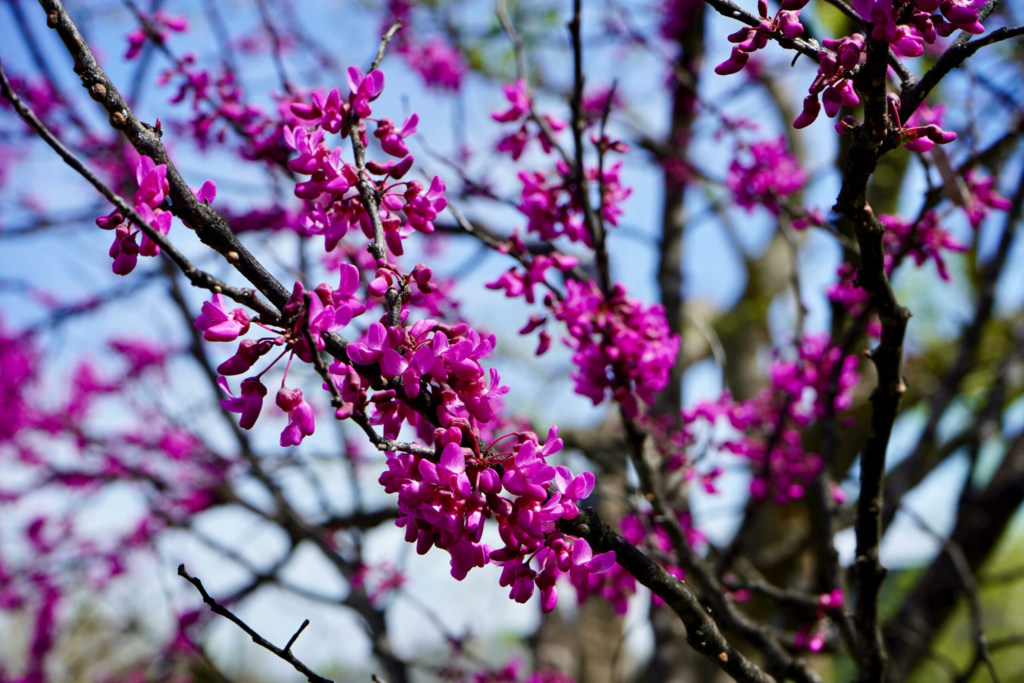
6. Western Redbud (Cercis occidentalis)
Native to California, Arizona, and Utah, the Western Redbud is perfectly adapted to the drier conditions of the western United States. It typically grows as a multi-stemmed shrub or small tree with magenta flowers and blue-green leaves.
Growth Habit: Smaller than Eastern Redbud, usually 10-18 feet tall USDA Hardiness Zones: 6-9 Special Features: Exceptional drought tolerance once established
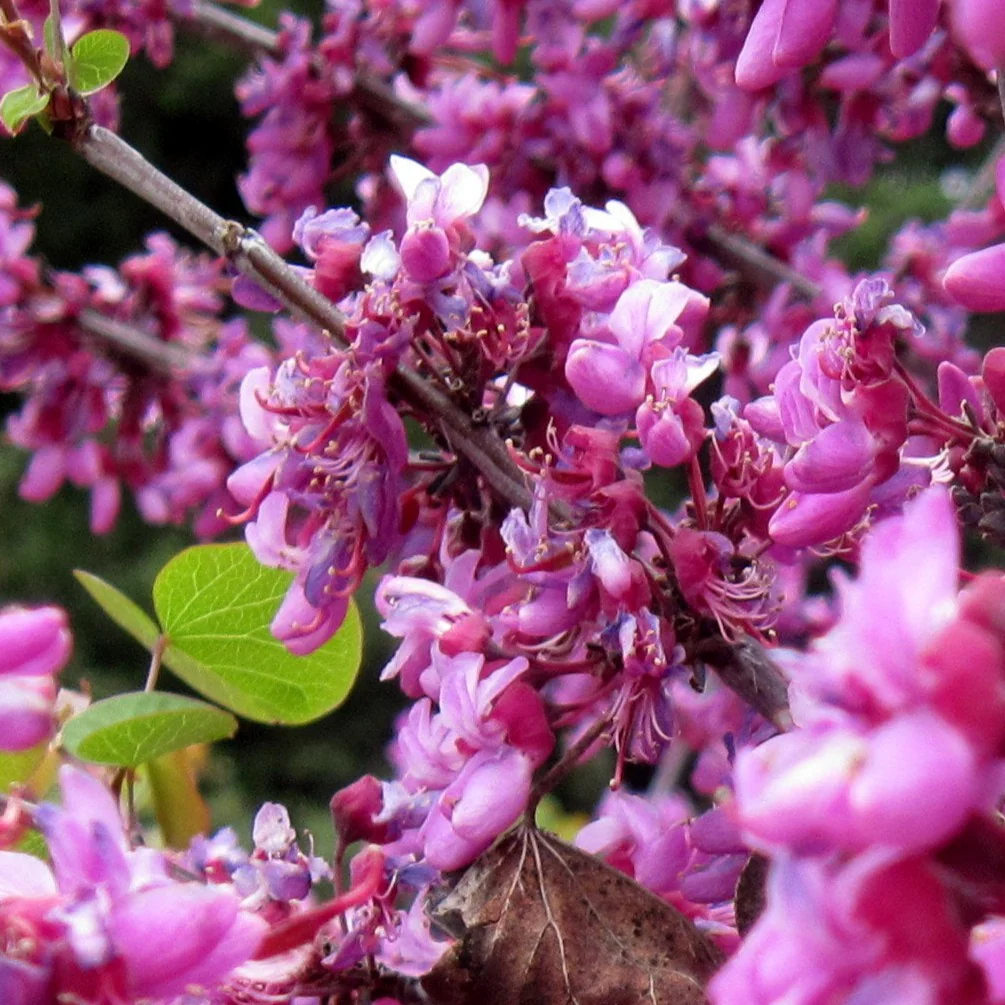
7. ‘Appalachian Red’ Redbud (Cercis canadensis ‘Appalachian Red’)
This variety stands out for its true red flowers—a rare color among redbuds, which typically lean toward pink or purple. The vibrant color makes it a showstopper in spring landscapes.
Growth Habit: Similar to Eastern Redbud, 20-25 feet tall and wide USDA Hardiness Zones: 4-9 Special Features: True red flower color, rare among redbuds
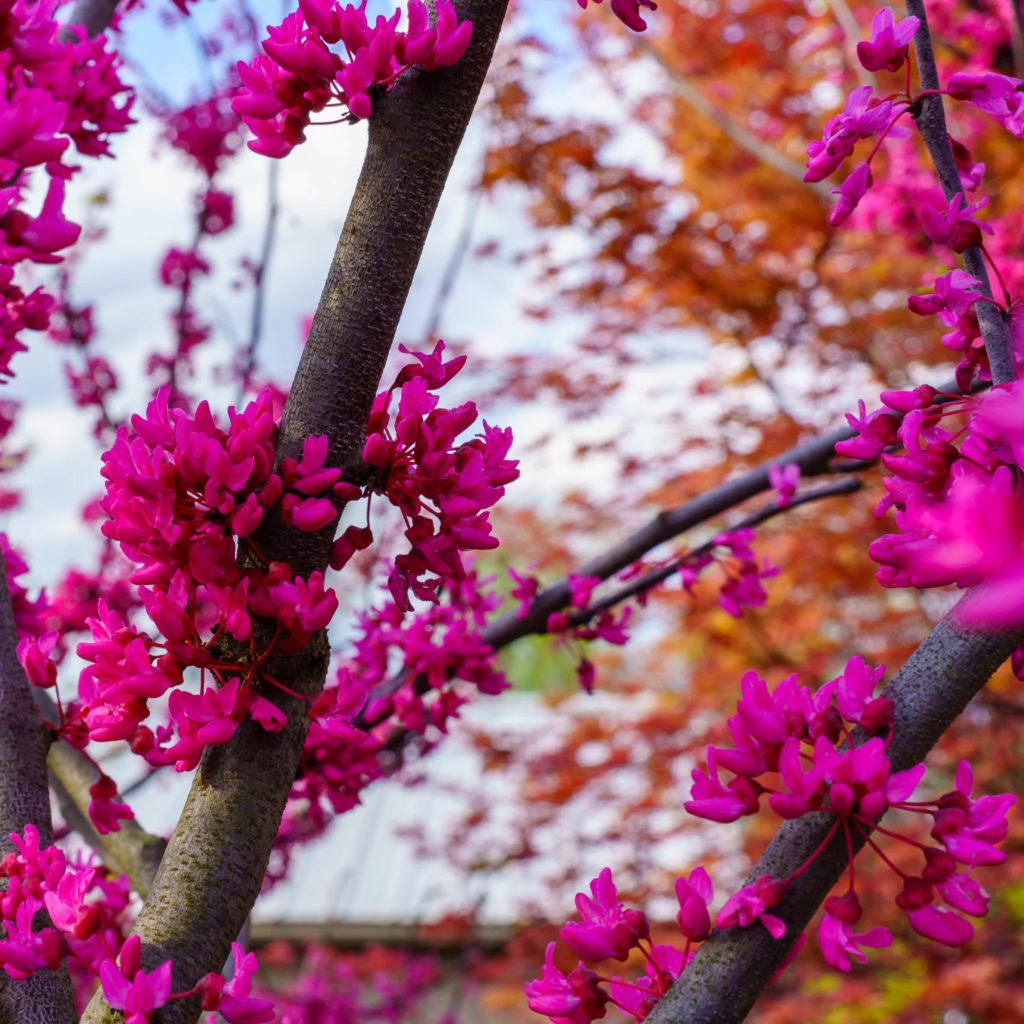
8. Chinese Redbud (Cercis chinensis)
Native to China and Japan, this variety features larger flowers than the North American species. It typically grows as a large multi-stemmed shrub rather than a tree, with spectacular floral displays.
Growth Habit: 10-15 feet tall and wide, often shrub-like USDA Hardiness Zones: 6-9 Special Features: Larger, more abundant flowers than American varieties
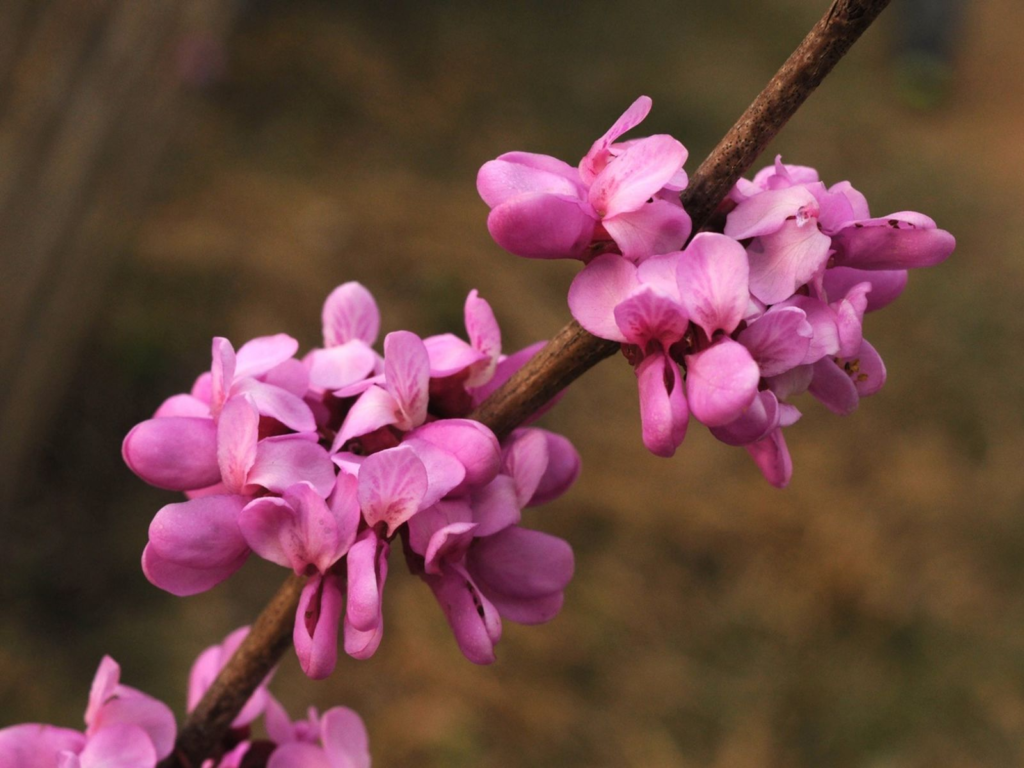
9. ‘Rising Sun’ Redbud (Cercis canadensis ‘Rising Sun’)
This newer cultivar has taken the horticultural world by storm with its exceptional foliage display. After the typical pink spring flowers, new leaves emerge in shades of apricot, gold, and orange before maturing to yellow-green.
Growth Habit: 12-15 feet tall and wide USDA Hardiness Zones: 5-9 Special Features: Spectacular golden-orange new growth throughout the growing season
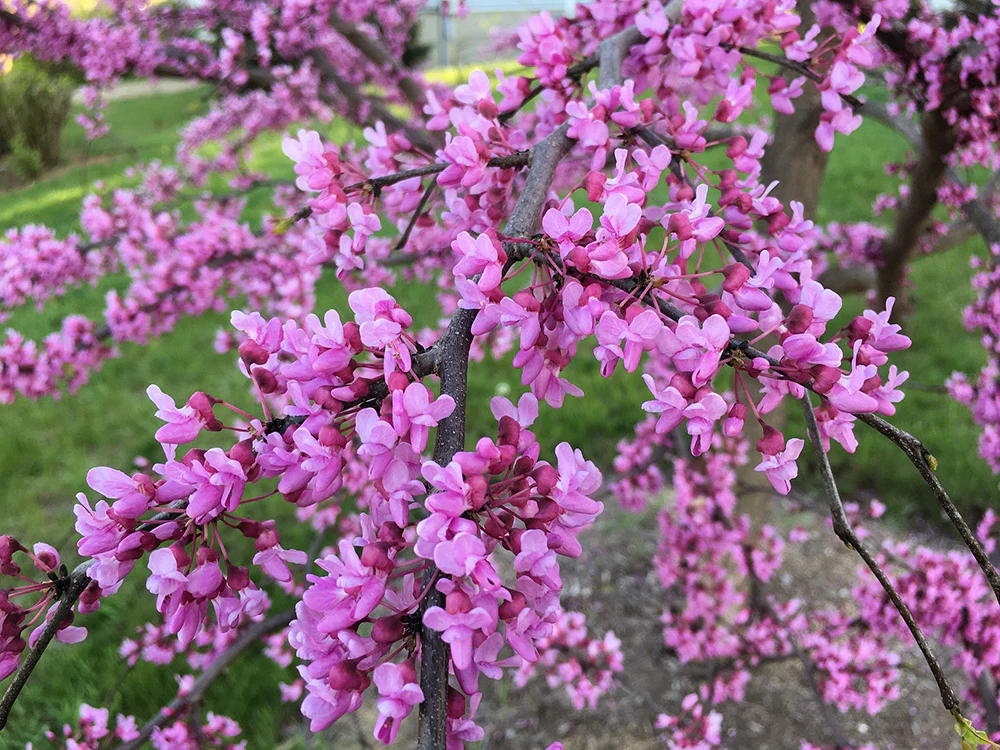
10. ‘Alba’ or White Redbud (Cercis canadensis ‘Alba’)
For gardeners seeking something different, the white-flowering redbud offers an elegant alternative to the typical pink blooms. This uncommon variety creates a sophisticated, clean look in the spring garden.
Growth Habit: Similar to Eastern Redbud, 20-25 feet tall and wide USDA Hardiness Zones: 4-9 Special Features: Pure white flowers create a unique spring display
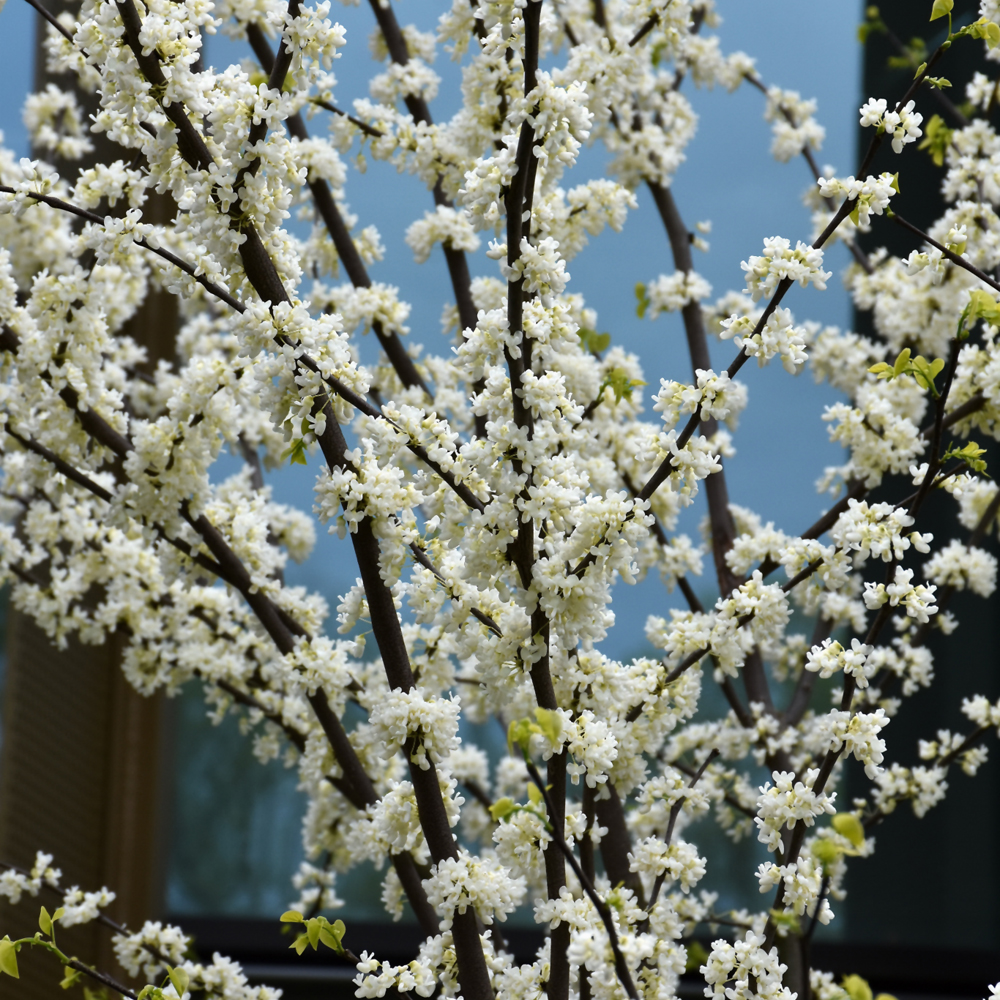
Comparing Redbud Varieties
To help you choose the right redbud for your landscape, here’s a comparative table of the varieties discussed:
| Variety | Height | Spread | Flower Color | Foliage Color | Drought Tolerance | Special Features |
|---|---|---|---|---|---|---|
| Eastern Redbud | 20-30 ft | 25-35 ft | Magenta-pink | Green | Moderate | Native to eastern US |
| ‘Forest Pansy’ | 20-25 ft | 20-25 ft | Deep pink | Purple to burgundy | Moderate | Purple foliage |
| ‘Ruby Falls’ | 5-6 ft | 4-5 ft | Lavender-pink | Purple | Moderate | Weeping habit |
| Texas Redbud | 15-20 ft | 15-20 ft | Magenta | Glossy green | High | Heat resistant |
| ‘Oklahoma’ | 15-20 ft | 15-20 ft | Wine-red | Glossy green | High | Deepest flower color |
| Western Redbud | 10-18 ft | 10-15 ft | Magenta | Blue-green | Very high | Drought adapted |
| ‘Appalachian Red’ | 20-25 ft | 20-25 ft | True red | Green | Moderate | Unique red flowers |
| Chinese Redbud | 10-15 ft | 10-15 ft | Rose-purple | Green | Moderate | Larger flowers |
| ‘Rising Sun’ | 12-15 ft | 12-15 ft | Pink | Gold to green | Moderate | Colorful new growth |
| ‘Alba’ | 20-25 ft | 20-25 ft | White | Green | Moderate | White flowers |
How to Grow and Care for Redbud Trees
Now that you’re familiar with the various redbud options, let’s look at how to successfully grow these beautiful trees in your landscape.
Selecting the Right Site
Redbuds perform best in locations that receive:
- Light: Part shade to full sun (morning sun with afternoon shade is ideal in hotter regions)
- Soil: Well-draining, slightly acidic to neutral soil
- Space: Allow enough room for the mature spread of your chosen variety
- Protection: Some shelter from strong winds is beneficial, especially for young trees
According to the National Park Service, redbuds naturally occur as understory trees, which explains their preference for some afternoon shade in hotter climates.
Planting Your Redbud
Follow these steps for successful establishment:
- Timing: Plant in early spring or fall when temperatures are mild
- Hole preparation: Dig a hole twice as wide as the root ball but no deeper
- Positioning: Set the tree so the root flare is slightly above ground level
- Backfilling: Use the native soil without amendments for better adaptation
- Watering: Create a soil berm around the tree and water thoroughly
- Mulching: Apply 2-3 inches of mulch in a circle around the tree, keeping it away from the trunk
Ongoing Care Requirements
Watering
- Newly planted trees: Water deeply once weekly for the first growing season
- Established trees: Provide supplemental water during extended droughts
- Winter watering: In dry winter regions, water occasionally during warm spells
Fertilization
- Timing: Apply a balanced, slow-release fertilizer in early spring
- Amount: Follow package directions for tree size
- Caution: Avoid over-fertilization, which can promote weak growth
Pruning
- Young trees: Minimal pruning to establish a good structure
- Mature trees: Remove dead, diseased, or crossing branches
- Timing: Prune immediately after flowering to avoid removing next year’s flower buds
Common Redbud Tree Problems and Solutions
Despite their resilience, redbuds can face certain challenges:
Diseases
- Verticillium wilt: A fungal disease causing branch dieback
- Solution: Remove affected branches, improve drainage
- Canker: Sunken areas on branches that can girdle and kill branches
- Solution: Prune out affected areas, avoid wounding the tree
Pests
- Leafhoppers: Insects that can cause leaf yellowing and curling
- Solution: Insecticidal soap applications can help control populations
- Scale insects: Small immobile insects that suck plant juices
- Solution: Horticultural oil applications during dormant season
Environmental Issues
- Leaf scorch: Browning leaf margins caused by drought or heat stress
- Solution: Consistent watering and mulching to retain soil moisture
- Frost damage: Late frosts can damage early flowers and emerging leaves
- Solution: Plant in protected locations in regions with variable spring weather
The US Redbud Market: Trends and Opportunities
The ornamental tree market in the United States has seen steady growth, with native species like redbuds gaining popularity as homeowners and landscapers increasingly value sustainable, wildlife-friendly choices.
Current Market Trends
- Native plant movement: Increased demand for regionally appropriate native trees
- Compact varieties: Growing interest in smaller varieties suitable for urban gardens
- Unique features: Rising popularity of trees with multiple seasons of interest
- Sustainability focus: Greater awareness of ecological benefits of native trees
Redbud Availability and Pricing
Redbud prices vary depending on:
- Size (container size or caliper for larger specimens)
- Variety (newer cultivars typically command higher prices)
- Region (locally native varieties may be more affordable)
You can typically expect to pay:
- $25-$50 for a 1-gallon container
- $75-$150 for a 5-gallon container or small balled-and-burlapped specimen
- $150-$300+ for larger specimens or rare varieties
Conclusion: Choosing Your Perfect Redbud
With their spectacular spring blooms, interesting growth habits, and relatively low maintenance requirements, redbud trees offer tremendous value for home landscapes. Whether you opt for the classic Eastern Redbud, the purple-leaved ‘Forest Pansy’, or one of the newer cultivars like ‘Rising Sun’, you’ll be rewarded with decades of spring beauty.
Consider your specific growing conditions, available space, and design preferences when selecting among the diverse redbud varieties. By matching the right tree to your site and providing proper care, you’ll enjoy these harbingers of spring for many years to come.
Remember that beyond their ornamental value, you’re also supporting local ecosystems when you plant native redbud varieties, providing early-season nectar for pollinators and contributing to the biodiversity of your landscape.
Now that you’re equipped with comprehensive knowledge about redbud tree varieties, you’re ready to make an informed choice and add one of these magnificent trees to your garden. Happy planting!
